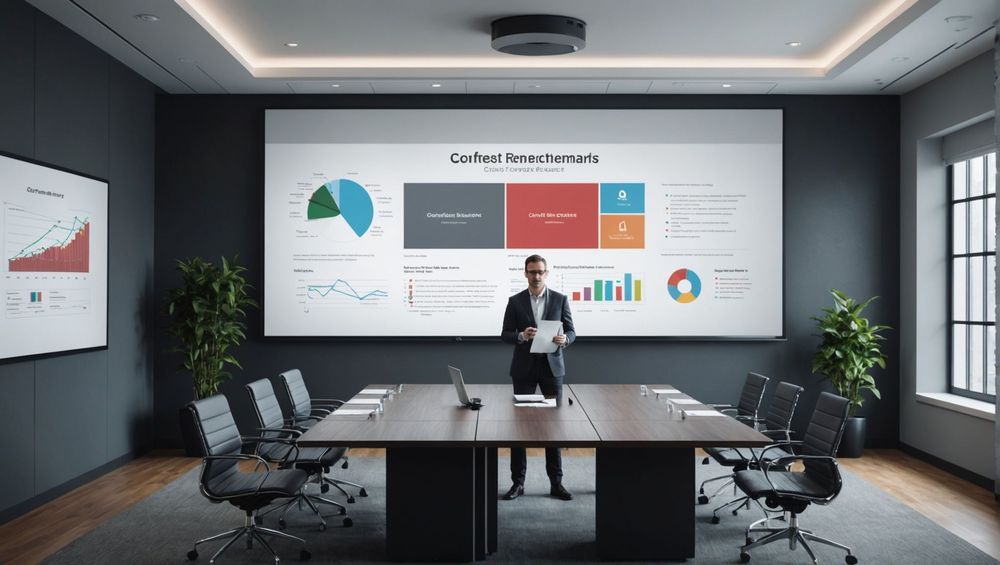In the ever-evolving world of digital marketing, the importance of monitoring and optimizing Cost Per Lead (CPL) and Customer Acquisition Cost (CAC) cannot be overstated. This article delves into the latest benchmarks for these crucial metrics in 2024, helping businesses strategize and maximize their return on investment (ROI).
What are CPL and CAC?

Cost Per Lead (CPL) is a metric that measures the cost-effectiveness of marketing campaigns in generating new leads. Essentially, it represents the amount spent to acquire a single lead. Conversely, Customer Acquisition Cost (CAC) refers to the total cost incurred to acquire a new paying customer. Both these metrics are instrumental in guiding the marketing budget and strategy.
Understanding CPL and CAC helps businesses to streamline their marketing efforts and focus on channels that provide the best ROI. While CPL focuses on potential customers or leads, CAC zeroes in on converting those leads into paying customers. These two metrics together offer a comprehensive picture of the efficiency and effectiveness of marketing activities.
Why Are CPL and CAC Benchmarks Important in 2024?

Staying abreast of industry benchmarks for CPL and CAC is essential for any business aiming to remain competitive. In 2024, digital marketing trends have shifted, with increased adoption of AI, machine learning, and enhanced data analytics. These changes have had a significant impact on the average CPL and CAC across various industries.
Benchmarking these metrics allows companies to evaluate their performance against industry standards. This assessment can unveil opportunities for improvement and areas where a business may be overspending. Additionally, it provides insights into market dynamics and evolving customer behavior, enabling better prediction and planning.
2024 CPL Benchmarks by Industry

CPL varies greatly across industries, influenced by factors such as market competition, product complexity, and target audience characteristics. Here are the CPL benchmarks for key industries in 2024:
Technology:
$50 – $100 per lead
Healthcare:
$35 – $70 per lead
Finance:
$60 – $120 per lead
Retail:
$20 – $40 per lead
Education:
$25 – $55 per lead
These benchmarks are indicative of the average spending to generate a lead in each respective sector. Variations are expected based on specific niche markets and campaign strategies. Companies should closely monitor their CPL to ensure their marketing campaigns are both cost-effective and efficient.
Breaking Down CAC Benchmarks
Customer Acquisition Cost involves a more comprehensive calculation compared to CPL. It includes the overall spend on marketing and sales divided by the number of new customers acquired within a specific period. The 2024 benchmarks for CAC are as follows:
Technology:
$400 – $800 per customer
Healthcare:
$300 – $600 per customer
Finance:
$500 – $1000 per customer
Retail:
$150 – $300 per customer
Education:
$250 – $500 per customer
These figures encapsulate the total investment required to acquire a new customer, from initial engagement to final conversion. A high CAC indicates a need for businesses to revisit and optimize their marketing, sales funnel, and customer retention strategies.
Strategies to Optimize CPL and CAC in 2024
To optimize CPL and CAC, businesses can employ a variety of strategies. These include leveraging advanced data analytics, integrating AI-driven tools, and personalizing customer engagement. Here are some practical steps:
Enhanced Targeting:
Use detailed customer personas and segmentation to focus marketing efforts on the most promising leads.
Automation:
Implement marketing automation tools to streamline workflows, improve efficiency, and reduce costs.
Content Marketing:
Develop high-quality, targeted content that attracts and nurtures leads organically.
Customer Retention Programs:
Invest in loyalty programs and after-sales support to encourage repeat business and reduce overall CAC.
A/B Testing:
Continuously test and refine marketing campaigns to discover the most effective tactics and reduce wastage.
These strategies not only help in lowering CPL and CAC but also enhance overall customer satisfaction and engagement, leading to sustainable business growth.
Conclusion
In conclusion, understanding and optimizing Cost Per Lead and Customer Acquisition Cost are paramount for any business aiming to thrive in the competitive landscape of 2024. By keeping abreast of industry benchmarks and implementing strategic optimizations, companies can ensure their marketing efforts are both cost-effective and impactful. Monitoring these metrics provides essential insights into the efficacy of marketing strategies, guiding businesses toward better resource allocation and improved ROI.
FAQ
1. What is the difference between CPL and CAC?
CPL measures the cost incurred to acquire a single lead, whereas CAC calculates the total expense to convert a lead into a paying customer.
2. Why are CPL and CAC benchmarks important?
Benchmarks provide a reference for businesses to gauge their performance and identify areas for potential improvement, ensuring they remain competitive in the market.
3. How can businesses reduce their CPL?
Businesses can reduce their CPL by improving targeting, utilizing marketing automation tools, and creating high-quality content tailored to their audience’s interests.
4. What factors influence CAC?
CAC is influenced by the total marketing and sales spend, the effectiveness of marketing campaigns, sales processes, and customer retention strategies.
5. Is it possible for CAC to be higher than CPL?
Yes, CAC is generally higher than CPL as it includes all costs related to converting a lead into a paying customer, beyond just acquiring the lead.


